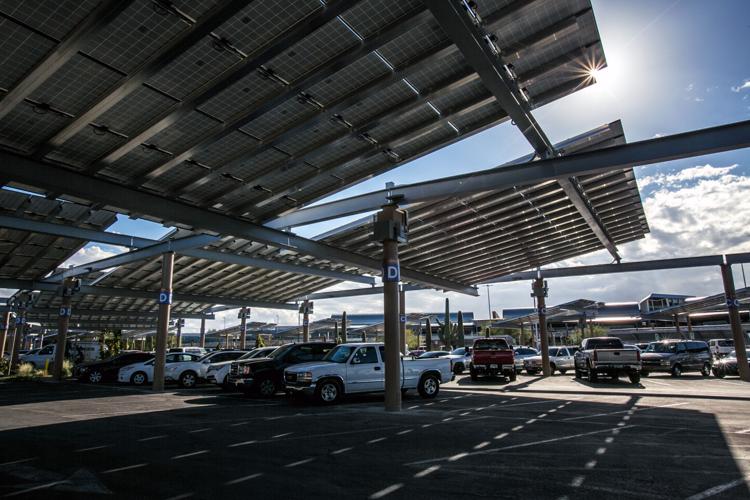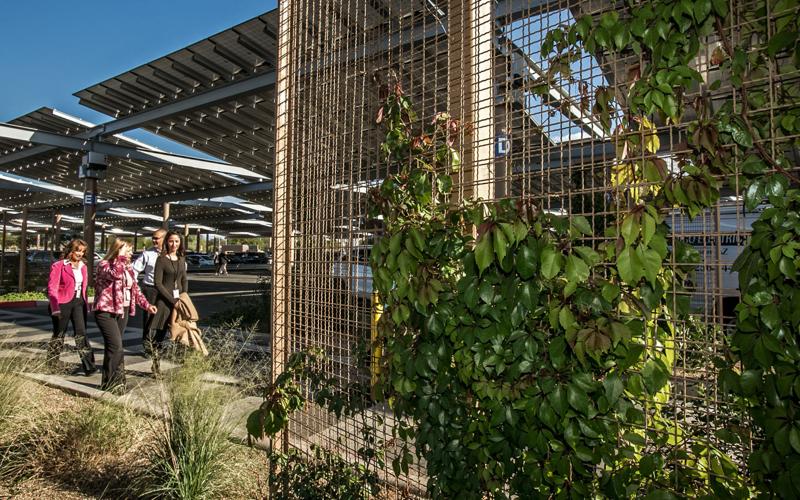The Tucson Airport Authority on Wednesday marked the completion of a solar-energy array over its hourly and daily parking lots.
The solar array will offset upwards of 50 percent of energy needs for Tucson International Airport’s terminal.
The $14.3 million project, funded mainly by grants from the Federal Aviation Administration, is expected to save the airport about $35,000 a month on its energy bills.
The project was started in 2013 with a first phase of 1 megawatt (AC) of photovoltaic panels going up in an arced array that shades hundreds of hourly and daily parking spaces in from of the terminal.
A second phase added another 1.5MW of capacity for a total of 2.5 MW.
Steel-mesh trellises line the walkways and, as climbing plants begin to fill, are expected to create a cooler micro-climate in a parking area.
Perhaps just as important as the energy savings, speakers at a ribbon-cutting ceremony said the array symbolizes Tucson’s commitment to technology and renewable energy.
“It’s one of those iconic projects for Tucson – it’s the first thing people will see when they arrive in Tucson and the last thing they see when they leave,” said Mayor Jonathan Rothschild, citing Tucson’s recognition in the U.S. Department of Energy’s Solar America Cities program.
And the shade the large solar panels make is a pleasant bonus, Rothschild added: “In Tucson, we love solar. In the summer, we love covered parking.”
TAA President and CEO Bonnie Allin said the solar project wouldn’t have been possible without grants from the FAA, which funded 91 percent of the work, along with funds from the Arizona Department of Transportation with a matching contribution by TAA.
Mark McClardy, FAA airports division manager for the Western-Pacific region, said his agency has helped fund many airport solar arrays, but Tucson’s stands out.
“It takes a vision to do this, it doesn’t happen by osmosis… and now it’s part of the passenger experience,” McClardy said.
Overall, the airport solar project will carry environmental benefits equal to a reduction of 25,000 gallons of gas burned and 245 tons of carbon dioxide per month, the airport said.
The mostly-local design and engineering team included Tucson-based Monrad Engineering Inc. for the electrical design; DOWL HKM, civil engineering; Herzog Associates, architectural; Schneider Structural Engineers, structural engineering; Wheat Design Group, landscape architect; and Sturgeon Electric, general contractor.
Chris Monrad, principal and vice president of Monrad Engineering, said the arced layout of the solar array was trickier than straight-row designs normally used for solar farms.
The project’s solar panels also point to the east, rather than the optimal south-facing arrangement, to avoid creating glare around the airfield, Monrad said.





